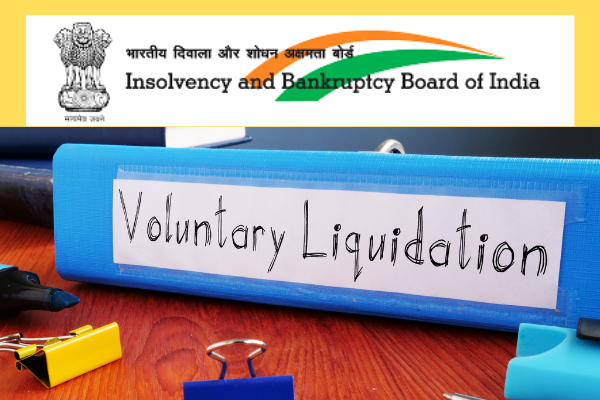- April 19, 2022
- Posted by: Maestro Legal
- Categories:

by Tanya Shrotriya*
A voluntary liquidation is a self-imposed wind-up and dissolution of a company that has been approved by its shareholders. Such a decision will happen once a company’s leadership decides that the company has no reason to continue operating. The purpose of a voluntary liquidation is to terminate a company’s operations, wrap-up its financial affairs, and dismantle its corporate structure in an orderly fashion, while paying back creditors according to their assigned priority.
A voluntary liquidation involves the pre-mediated termination of a corporation by selling off its assets and settling its outstanding financial obligations. The purpose of a voluntary liquidation is to cash out of a business that does not have a viable future or which has no other purpose in remaining operational. Such a liquidation is not mandated by any court or regulatory body but must be approved by shareholders and the board of directors.
VOLUNTARY LIQUIDATION
Voluntary liquidations may end up commencing when a specific event that is outlined by the board of directors occurs. In such cases, a liquidator is appointed. A liquidator is an entity that liquidates assets on behalf of a company. When assets are liquidated, they are generally sold on an open market for cash and other equivalents. Liquidators have the legal power to act on behalf of a company for various actions. When a company is liquidating, whether it is voluntary or involuntary, they will appoint a third-party liquidator to sell their assets for them. Liquidators essentially have the legal authority to act on behalf of the company to sell assets and complete a liquidation. Liquidators are sometimes referred to as trustees as well. Liquidators must follow the order of obligations, though. For example, the most senior debt levels must receive cash from liquidation first, then subordinated debt, mezzanine financing (preferred equity, payment in kind), and then finally, equity holders receive cash from liquidation last.
PROCESS OF VOLUNTARY LIQUIDATION
Step 1: Declaration of Solvency by Board / Designated Partners
The Directors of the Company has to make a Declaration of Solvency in form of an Affidavit confirming following that:
- the company has not committed any default of repayment of debt and
- the company is solvent and it will be able to pay its debts in full from the proceeds of assets to be sold in the voluntary liquidation; and
- the company is not being liquidated to defraud any person.
The declaration shall list each debt of the corporate person as on that date along with Audited financial statements and record of business operations of the company for the previous two years or for the period since its incorporation and a valuation report of the assets of the company by a Registered Valuer, if any.
The declaration of solvency should be filed in Form GNL-2 with the Registrar of Companies
Step 2: Identify an Insolvency Professional as Liquidator
The Board has to identify an Insolvency Professional, who is registered with Insolvency and Bankruptcy Board of India (IBBI) to act as Liquidator to conduct the voluntary liquidation process.
Step 3: Convene Board Meeting
Convene a meeting of Board of Directors to decide the following:
- Approving voluntary liquidation of the company
- Appointing an Insolvency Professional as the Liquidator of the Company
- Fixing day, date and time for general meeting of the company and Issue notice of the EGM containing the proposed resolution along with the explanatory statement.
Step 4: Convene General Meeting of Shareholders
Convene a General Meeting of shareholders within 4 weeks of Declaration of Solvency and pass the following resolutions:
- Special Resolution in general meeting for liquidating the company voluntarily or an ordinary resolution for liquidating as a result of expiry of any fixed period of its existence in articles
- Resolution appointing Liquidator of the company
In case the company has creditors, a resolution should also be passed by the creditors holding 2/3rd of the debt within 7 days of members’ resolution.
Step 5: Filings with Registrar of Companies and IBBI
The liquidator has to file the resolutions to the Registrar of Companies and IBBI.
The voluntary liquidation proceedings are deemed to have commenced from the date of passing of the resolution by the members subject to creditor’s approval. With the passing of Special Resolution in general meeting and appointment of Liquidator, all powers of the board of directors, key managerial personnel and the partners of the corporate debtor shall cease to have effect and shall be vested in the liquidator.
Step 6: Liquidator is In-charge of the company:
The liquidator will now take over the charge of the company and proceed with further steps which shall include realization of assets of the company, settlement of outstanding dues and distribution of proceeds to the stakeholders. The liquidator shall have the power to consult any stakeholders who is entitled to the distribution of the proceeds.
Step 7: Public Announcement:
The liquidator shall make a public announcement within 5 days from his appointment in Form A of Schedule I calling stakeholders to submit their claims within 30 days from liquidation commencement date.
It should be published in English and Regional language newspapers having wide circulation where the registered office is situated and also on the website of the company. The liquidator shall verify the claims within 30 days from the last date of receipt of claims and either accept or reject the claims.
The liquidator shall prepare a list of stakeholders within 45 days from the last date for receipt of claims on the basis of proof of claims received with:
- the amounts of claim admitted, if applicable,
- the extent to which the debts or dues are secured or unsecured, if applicable,
- the details of the stakeholders, and
- the proofs admitted or rejected in part, and the proofs wholly rejected.
Step 8: Preliminary Report
The liquidator shall submit a preliminary report to the company within 45 days from the commencement of liquidation stating:
- the capital structure of the corporate person;
- the estimates of its assets and liabilities as on the liquidation commencement date based on the books of the corporate person:
- whether he intends to make any further inquiry in to any matter relating to the promotion, formation or failure of the corporate person or the conduct of the business thereof; and
- the proposed plan of action for carrying out the liquidation, including the timeline within which he proposes to carry it out and the estimated liquidation costs.
Step 9: Opening of Bank Account
The liquidator shall open a bank account in a scheduled bank in the company’s name followed by the words “in voluntary liquidation’ for receiving all the money’s due and realized to meet liquidation cost. All payments made above 5000 rupees shall be done only by drawing cheque or through online banking transaction.
Step 10: No-Objection from Tax Authorities
The liquidator has to obtain a No-Objection Letter from the Tax authorities of the place where the registered office of the company is situated.
Step 11: Realization of Assets
The liquidator shall recover and realize the assets of the company in a time-bound manner maximizing the value of the stakeholders. The money realized shall be deposited in the bank account opened for this purpose.
Step 12: Distribution
The money realized from the proceeds shall be distributed to the stakeholders within 6 months from the receipt of the amount after deducting the liquidation cost. If any asset cannot be realized due to its nature or other circumstances, the liquidator may distribute it as such with the approval from the company.
Step 13: Completion of Liquidation
The liquidator has to complete the process of liquidation within 12 months from the date of commencement of liquidation.
Step 14: Liquidation extending beyond 12 months and Annual Report
If the Liquidation extends beyond a period of 12 months, the liquidator has to hold a meeting of contributories within 15 days from the end of 12 months and at every succeeding 12 months until the company is fully dissolved. He shall also present an annual report showing the progress of liquidation which shall include:
- settlement of list of stakeholders,
- details of any assets remaining unsold,
- distribution made to the stakeholders,
- distribution of unsold assets made to the stakeholders;
- developments in any material litigation, by or against the corporate person;
- filing of, and developments in applications for avoidance of transactions in accordance with Chapter III of Part II of the Code
Step 15: Final Report
Once the Liquidation process is completed, the liquidator has to prepare the Final Report containing:
- audited accounts of the liquidation
- a statement showing the assets are disposed, debts are discharged and no litigation is pending
- a sale statement of assets showing realized value, its cost, manner and mode of sale, any shortfall, to whom it is sold etc
Step 16: Filing
The Liquidator shall then file the Final report with the Registrar and the IBBI.
Step 17: Application to NCLT
When the affairs of the company are completely wound up, the liquidator has to make an application to NCLT for dissolution of the company.
Step 18: Order by NCLT
The NCLT shall then pass an order that the company shall stand dissolved from the date of the order.
Step 19: Filing of Order
The copy of order shall then be forwarded to the registrar where the company is registered.
Step 20: Preservation of records
The liquidator has to preserve the reports, registers and books of accounts for at least 8 years after the dissolution of the company.
FORM- H
COMPLIANCE CERTIFICATE. (Under Regulation 39(4) of the Insolvency and Bankruptcy Board of India (Insolvency Resolution Process for Corporate Persons) Regulations, 2016.
TIME LIMITATION
Time period for completion of liquidation – Regulation 37 of the VL Regulations requires that the liquidator shall endeavor to complete the liquidation process of the corporate person within 12 months from the liquidation commencement date. In case the process continues beyond, the liquidation shall call meeting(s) of contributories at intervals specified. The time period suggested under the Liquidation Regulations is 2 years.
CONCLUSION
The voluntary liquidation is the process by reducing the timelines and imposing greater responsibilities on the liquidator. The requirement of new form H relieves some burden off the adjudicating authorities, with relevant data and satisfaction of compliance checks being available to it in a structured tabular format. This shall aid in further enhancing the freedom of exit for the investors in line with India’s ambitious goals of providing ease of doing business to investors during all the phases of the life-cycle of businesses.
